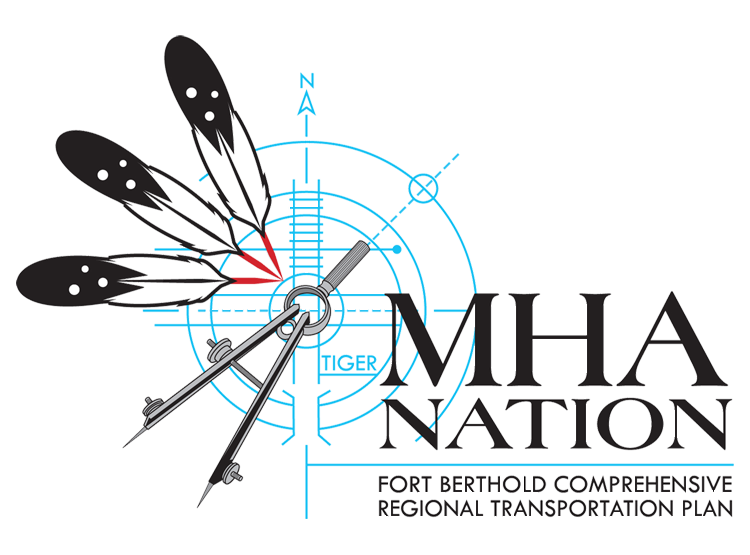PUBLIC TRANSIT PLAN
Safe, reliable, and affordable public transit provides access to vital services such as health care, education, and employment. In our 2013 survey, 85% of Fort Berthold residents said current Tribal Transportation offerings were not adequate, and 79% said they would use public transit.

Public Transit Plan
What is a Public Transit Plan?
A public transit plan identifies the transportation needs of the community, collects data, and implements funding necessary to provide community members reliable, safe and affordable access to essential services such as healthcare, jobs, and education. Oil and gas development on Fort Berthold has significantly increased transport truck traffic on deteriorating roads resulting in increased danger to residents, thus encouraging a need for a reservation-wide public transit service. In addition to providing access to basic services, a public transit program is vital to improving the quality of life in rural areas for community members with disabilities, individuals or families living below the poverty level, for community members without a driver’s license, for households without cars, and for strengthening the economy by better connecting Fort Berthold segments and region. Community input is very important to help ensure that the proposed transit system satisfies the needs of the people, and that the people actually use the system when it becomes operational.
Fort Berthold proposed bus services include…
- A fixed-route bus service (bus has set schedule and stops)
- A demand/response bus service (rides by appointment)
- A deviated fixed-route bus service (scheduled stops and can schedule pick-ups)
The number of Tribal transit programs in the US have greatly increased over the last 10 years.1 In 1999, only 18 tribes received tribal transit funding from the Federal Transit Authority. That number has grown to over 118 Tribes (and an additional 45 in the planning stage)2 providing some type of transit service using a variety of funding programs. Transit programs range in scope from one vehicle to provide local access to human services programs on reservations to programs operating 40 vehicles to provide access to employment, services, and education over long distances. Annual operating budgets range from $40,000 to nearly $2 million.
Why is Public Transit Planning Important?
Access to Vital Services.
Affordable, safe, and reliable public transit is important for providing access to essential services to our remote and isolated communities, particularly for low-income families, elders, members with health problems or disabilities, and students. By paying a minimal fee for using public transit, we will have many more affordable options for traveling across Fort Berthold.
Reduce Emissions and Dust.
In 2013, 86% of the 358 Fort Berthold residents surveyed indicated that they owned a vehicle. By using public transportation, vehicle emissions and road dust would be reduced, improving air quality, visibility, resident health, and the impacts on Climate Change. 3
Reconnect our communities.
By connecting isolated areas of Fort Berthold with safer, more affordable, and more reliable transportation opportunities like public transit, there is greater opportunity to strengthen community relationships.

Tribal Self-Determination.
As a sovereign nation, MHA Nation uses transportation program funds and manages them to best fit our current transportation needs.4 Competing for, and winning the TIGER Grant funding has positioned us to be transportation leaders across the region and State and to set an example for Tribal governments across the US.

Road Safety.
Access to public transit will improve road safety for community residents that drive on poor and deteriorating roads that are often inundated with a large number of semi-trucks carrying heavy loads. In addition,using public transit reduces the likelihood of alcohol or drug related driving crashes on Fort Berthold roads.

Transportation Equity.
There are currently 118 Tribal Transportation Programs in the US (with 45 more in the planning stage). In order for MHA Nation to ensure equitable health services, employment opportunities, and access to education with neighboring counties and states, it is essential to invest in a public transit program that will help us achieve these goals.
Technical Memorandum #2.1
Technical Memorandum #2.1 presents a history of the Fort Berthold Indian Reservation, a review of previous studies, a summary of community conditions and demographics, an overview and evaluation of existing tribal and non-tribal transit services, as well as a summary of staff and stakeholder input.
Technical Memorandum #2.2
Technical Memorandum #2.2 presents and evaluates public transit and ferry service options. This document also offers preliminary service recommendations.
Resources
What would YOU like to see addressed in the Transit Plan?
Enter your full name, a valid email address, and a detailed message in the forms just below to tell us what YOU would like to see in the Transit Plan. What else would you like to know about it? We also want your stories and perspectives on the questions framing this project; What is our history with public transit? Where is it today? Where do we want it to be in 20 years?
Also, be sure to follow our blog, Facebook, Instagram, Twitter, Google+ and Linkedin!






